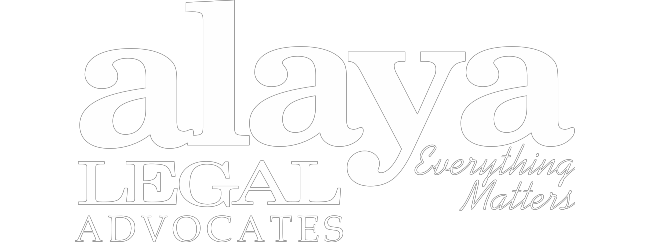Designed by Freepik
|
Reference Date | Version |
September 30, 2025 | 1.0 |
|
Keywords |
Deviation Settlement Mechanism, Power Purchase Agreements, Drafting, Energy Conservation Act, Electricity Act, Solar and Wind energy, Renewable Consumption Obligations, Captive Consumers. |
|
Legislation(s)/Policies |
(i) Electricity Act, 2003 (ii) Energy Conservation Act, 2001 (iii) Central Electricity Regulatory Commission (Unscheduled Interchange charges and related matters) Regulations, 2009 (iv) Central Electricity Regulatory Commission (Deviation Settlement Mechanism and related matters) Regulations, 2024 (v) Draft CSERC (Intra-State Deviation Settlement Mechanism and Related Matters) Regulations, 2025 (vi) TNERC (Forecasting, Scheduling and Deviation Settlement for Solar and Wind) Regulations, 2019 (vii) HERC (Forecasting, Scheduling and Deviation Settlement for Solar and Wind) Regulations, 2019 (viii) RERC (Forecasting, Scheduling, Deviation Settlement and Related Matters of Solar and Wind) Regulations, 2017 |
|
Jurisdiction |
India |
Grid stability and renewable energy bankability in India increasingly turn on how contracts manage deviation risk. The Deviation Settlement Mechanism (DSM) has moved from being a technical regulation into a central commercial concern in renewable energy PPAs. By directly linking deviations from schedule to financial penalties, DSM determines not only the operational discipline of generators and consumers but also the cost structure and predictability of long-term contracts.
This article examines the legal framework of DSM under central and state regulations, its evolution from the Unscheduled Interchange (UI) regime, and the challenges it creates for renewable generators, corporate buyers, and captive users.
As renewable energy integration grows, forecasting, scheduling, and deviation charges will define contract viability. Careful drafting of DSM provisions in PPAs, covering allocation of liability, change-in-law risks, and settlement mechanisms, is now essential to preserve bankability and avoid disputes. For investors and corporate buyers alike, managing DSM exposure is no longer optional; it is a core element of risk allocation in India’s clean energy transition.
- Introduction
In India’s renewable energy landscape, Power Purchase Agreements (PPAs) are no longer just about tariff certainty; it is about managing operational and regulatory risk. Among these risks is the charge for deviation from schedule generation/drawal under the Deviation Settlement Mechanism (DSM), which directly affects the cost of power procurement and project bankability. Renewable energy, being variable in nature, makes strict adherence to schedules difficult even with emerging technology, and both generators and corporate buyers can face penalties if deviations are not properly anticipated and allocated.
This article examines the deviation settlement mechanism applicable to renewable energy generating stations, with a particular focus on solar and wind projects. It also considers the broader framework of grid stability and the implications of deviation from scheduled generation.
- Legal and Policy Framework
The Electricity Act, 2003 (Act) incorporates the principle of open access (Section 42) and directs regulators to encourage generation of renewable energy through enabling policies. Building on this foundation, the National Electricity Policy emphasises the accelerated integration of clean energy into the grid. Wind and solar projects have been accorded “must-run” status, meaning their output cannot be curtailed for commercial reasons and may only be restricted where grid security is at stake.
The rationale is tied to India’s decarbonisation goals, Renewable Purchase Obligations (RPOs) under Section 86(1)(e) of the Act, and Renewable Consumption Obligations (RCOs) under the Energy Conservation Act, 2001. “Must-run” status provides investors confidence in priority dispatch and cost recovery, lowering project risk and encouraging capital inflows while ensuring secure grid operations.
- DSM: Grid Stability and Discipline
Deviation Settlement Mechanism (DSM) assumes a pivotal function with respect to grid stability and discipline. Although renewable energy generators are accorded must-run priority, they remain subject to the forecasting and scheduling regulations issued by State Commissions pursuant to Section 181 of the Act. Due to the inherently fluctuating nature of renewable generation, actual output may deviate from scheduled output. The DSM framework guarantees that the costs incurred from such deviations are not socialised across the grid, but are instead borne by the responsible entity.
The result is a dual regime: priority dispatch on the one hand and liability for deviations on the other. For Power Purchase Agreements (PPAs), this creates unique drafting challenges. Parties must determine how deviation charges are allocated between generator and buyer, how change-in-law risks (for charges such as cross-subsidy surcharge, wheeling, banking, or deviation penalties) are managed, and how tariff structures remain bankable over the contract term. Poor drafting can leave one party disproportionately exposed, while a balanced approach can mitigate losses and preserve commercial certainty, especially for long-term PPAs.
At the state level, regulators in Haryana, Chhattisgarh, Tamil Nadu, and Rajasthan have their own Forecasting, Scheduling, and DSM regulations, making PPAs essential for corporate buyers and generators to navigate the regulatory landscape.
- What are the DSM Regulations?
DSM is a framework that was introduced to change the mechanisms for penalising Unscheduled Interchange (UI) under the Central Electricity Regulatory Commission (Unscheduled Interchange charges and related matters) Regulations, 2009. Though the UI mechanism was sought to maintain grid stability and power quality through regulation of frequency in the grid, as per the CERC Explanatory Memorandum to the CERC (Deviation Settlement Mechanism and related matters) Regulations, 2013, however, an enquiry report on grid failures revealed that UI failed to penalise States and Utilities efficiently for failing to comply with their schedules and resource adequacy plans. Such utilities neglected the importance of planning for generation adequacy and over-drew power to meet consumer demands, which resulted in grid instability.
The UI mechanism focused on frequency regulation in the grid; however, it is possible to have instances where grid frequency is in range but unscheduled power is flowing in the grid which can still cause major grid failures. The CERC Explanatory Memorandum suggested adopting a new market mechanism with the CERC (Deviation Settlement Mechanism and related matters) Regulations, 2014.
Currently, the CERC (Deviation Settlement Mechanism and related matters) Regulations, 2024 (CERC DSM Regulations) are in force. The CERC DSM Regulations are applicable on all grid-connected regional entities and other entities engaged in inter-State purchase and sale of electricity. The CERC DSM Regulations, aim to maintain grid security and stability by using a commercial settlement system that discourages grid participants from deviating from their scheduled injection or drawal of electricity.
Deviation for electricity sellers is the difference between actual injection measured by interface meters and scheduled generation in a time block. For buyers, it’s the difference between actual drawal and scheduled drawal.
Under the DSM framework, deviation charges are not confined to charges payable by the defaulting party but in limited circumstances, they also provide for receivables, recognising that some deviations may incidentally support grid stability. For example, in the case of general sellers (generator), receivables arise in cases of over-injection (generating more than scheduled), but only within strict tolerance limits of ±10% of the deviation computed or 100 MW, whichever is lower. Even within this band, receivables are frequency-linked; at normal frequency (49.97–50.03 Hz) they are paid at the reference charge rate, but as frequency rises, receivables reduce, and at very high frequency no payment is allowed. Further, over-injection beyond the prescribed frequency for the tolerance band, seller has to pay for such deviation. At low frequency, receivables may rise modestly, reflecting the system’s need for additional supply.
On the buyer side, receivables can arise in cases of under-drawal (consuming less than scheduled). Here, the consumer is effectively helping to ease the system by not taking power when supply is tight. As with generators, the receivable is frequency-dependent; when the frequency is low, the under-drawing consumer is compensated. As frequency rises, the receivable diminishes, and once frequency crosses the upper band, no compensation is provided.
In both cases, receivables are carefully limited by tolerance bands and frequency conditions. This ensures that DSM remains a settlement tool to preserve grid discipline, rather than a means for parties to deliberately deviate and earn extra revenue.
- DSM Regulation – Key Points Across Haryana, Rajasthan, Tamil Nadu and Chhattisgarh.
State Commissions have separate DSM regarding commercial arrangements and deviation charges. Further, they have also notified specific DSM regulations that govern the forecasting and scheduling of solar and wind power generated within the State. The comparison below examines these renewable DSM regulations in the context of deviation settlement, forecasting, and scheduling for Haryana, Tamil Nadu, Chhattisgarh and Rajasthan. These states are highlighted due to their relatively high potential for solar and wind energy generation in India.
The State regulations of Haryana, Rajasthan, and Tamil Nadu mentioned in the table below provide deviation charges only for deviations from the scheduled generation by solar and wind power generators. For deviation charges applicable to buyers/consumers (for under-drawal or over-drawal from the grid) and to other generators, the following DSM regulations are to be referred to:
- Tamil Nadu Electricity Regulatory Commission (Deviation Settlement Mechanism and related matters) Regulations, 2019
- Haryana Electricity Regulatory Commission (Deviation Settlement Mechanism and related matters) Regulations, 2019.
- Rajasthan Electricity Regulatory Commission (Deviation Settlement Mechanism and related matters) Regulations, 2017.
The new DSM Regulation in Chhattisgarh, namely CSERC (Intra-State Deviation Settlement Mechanism and Related Matters) Regulations, 2025 are yet to be notified
|
Head |
Haryana |
Rajasthan |
Tamil Nadu |
Chhattisgarh |
|
Regulation |
• HERC (Forecasting, Scheduling and Deviation Settlement for Solar and Wind) Regulations, 2019 |
• RERC (Forecasting, Scheduling, Deviation Settlement and Related Matters of Solar and Wind) Regulations, 2017 |
•TNERC (Forecasting, Scheduling and Deviation Settlement for Solar and Wind) Regulations, 2019 |
•Draft CSERC (Intra-State Deviation Settlement Mechanism and Related Matters) Regulations, 2025 •Applicability of Intra-state ABT regime on Wind, Solar and Wind-Solar hybrid generating plant as per conditions specified therein. • ABT regime covers fixed charges, energy charges and deviation charges • Deviation settlement mechanism similar to central regulation |
|
QCA appointment |
• Appointed by generators at pooling sub-station • Appointment requires approval of at least 51% of generators (by installed capacity) • Treated as State entity and is the single point of contact with SLDC • Individual generator may act as its own QCA • Generators must ensure technical and financial competence |
•Appointed by generators at pooling sub-station • Approval by majority (by installed capacity) • Acts as single point of contact with SLDC • One QCA per pooling station; if only one generator, it acts as QCA |
• Appointed by generators at pooling sub-station • Approval by majority (by installed capacity) • Perform functions for all connected generators once appointed • Generators must ensure technical and financial competence |
A QCA (lead generator or authorised agency registered with SLDC) to coordinate forecasting, scheduling, real-time data and deviation settlement for renewable, hybrid and storage stations |
|
Forecasting and Scheduling |
•QCA provides aggregated forecasts for wind and solar generators • Submits day-ahead and week-ahead schedules • Any deviation is commercially settled and borne by generators through QCA |
• Forecasting may be done by generators or QCA • Day-ahead schedule submitted to SLDC • Any deviation is borne by generators, either directly or via QCA |
• QCA aggregates schedules of wind and solar generators at pooling station • Submits day-ahead and week-ahead schedules to SLDC • Deviation costs are borne by generators through QCA |
• For long- and medium-term open access, rules follow CERC IEGC 2023, State Grid Code 2011 and CSERC OA Regulations 2011 • Seller must declare capacity by 07:00 hours on previous day • Buyers must confirm by 07:30 hours • If no confirmation, zero capacity is assumed • SLDC issues final schedule by 09:30 hours |
|
Deviation Charges |
• Deviation charges payable by QCA to State Deviation Pool via SLDC • QCA de-pools charges among generators at pooling station |
• Deviation charges payable by generator or QCA • QCA de-pools charges based on each generator’s deviation or a mutually agreed method |
• Deviation charges payable by QCA to State Deviation Pool via SLDC • QCA de-pools charges among generators in proportion to actual generation |
• Deviation by buyers is payable by buyers • Deviation by Seller in case of a generating station based on wind or solar or hybrid of wind-solar resources, with or without storage (WS Seller) is payable by WS sellers through QCA • For WS Sellers, charges are volume-based (not frequency linked) • De-pooling among WS Sellers is done as per methodology agreed between QCA and such individual WS sellers. |
- Judicial Stance on Deviation Charges and Deviation from Scheduled Generation
Judicial interpretation of DSM provisions shows how regulators and courts have balanced grid discipline with practical realities:
- Arinsun Clean Energy Pvt. Ltd v. CERC [APTEL, Appeal No. 203 of 2022, 242 of 2022, 248 of 2022]
The dispute arose because the DSM Regulations, 2014 did not explicitly provide for drawal of auxiliary power by renewable generators during non-generation hours. While RLDCs were already settling such drawals as unscheduled interchange under DSM, CERC directed the generators to instead enter into PPAs or open access contracts, a requirement APTEL found impossible to comply with and inconsistent with the regulatory framework. The Tribunal held that such drawals are to be governed under DSM, in line with subsequent recognition under IEGC 2023.
Held:
“It cannot be disputed that the unscheduled drawl or injection of power is a threat to the security and smooth function of the grid, however, such an exchange continues to be prevailing in the national grid, even the Central Commission under IEGC 2023 has allowed drawl of unscheduled power during non-generation hours on payment of deviation charges as per DSM Regulations, the relevant extract of the IEGC 2023 Regulations (para 45(15)) is reproduced hereunder:
‘Provided that where the generating station including a renewable energy generating station is unable to enter into a contract for the drawl of power during non- generation hours, it may draw power from ISTS on payment of deviation charges as per the DSM Regulations.’
…the IEGC 2023 Regulations not only binds the Central Commission but are also binding for the contesting parties herein, accordingly, from the date of notification of IEGC 2023 Regulations, the issue stands resolved, even the Central Commission cannot pass orders in contravention to such Regulations.”
- HNV Castings Pvt. Ltd. v. RERC [APTEL, Appeal No.221 of 2021]
The Tribunal held that an open access consumer, being fully aware of the RERC Open Access Regulations 2016, could not overdraw beyond its admissible schedule. Even inadvertent overdrawal attracted UI charges. The decision underlined that UI charges exist to preserve grid discipline and to ensure compliance with declared schedules.
Held:
“In our opinion, the Appellant being fully aware of the provisions of RERC OA Regulations 2016, being regular open Access Consumer, should not have drawn more energy than the admissible drawal considering the schedule given by him, even inadvertently, so as not to attract the UI charges….The basic purpose of imposing UI Charges is to maintain grid discipline and to ensure that consumers comply with schedules given by them and charges are payable for deviation from final schedule i.e. any drawl in excess of schedule.”
- Central Power Distribution Co. v. CERC [Supreme Court, (2007) 8 SCC 197]
The Hon’ble Supreme Court clarified that UI charges under the erstwhile ABT scheme are payable whenever there is deviation from schedule, whether by generators or beneficiaries. The Court described UI charges as a commercial mechanism to ensure grid discipline, not a penalty, and confirmed liability rests with whichever party causes grid indiscipline.
Held:
“…a third charge contemplated in the ABT scheme is for the unscheduled interchange of power (UI charges). The UI charges are payable depending upon what is deviated from the schedule and also subject to the grid conditions at that point of time…”
“…UI charges are a commercial mechanism to maintain grid discipline. The UI charges penalises whosoever caused grid indiscipline, whether generator (NTPC) or distributor, is subject to payment of UI charges who are not following the schedule. The UI charges are not payable if the appellants maintain their drawl of electricity consistent with the schedule given by themselves. Therefore, there is no merit in the contention of the appellants that the UI charges are by way of penalty.”
- Drafting suggestions for incorporating DSM provisions in Corporate PPAs
The judicial position makes it clear that deviation charges are treated as a commercial mechanism to enforce grid discipline, and liability arises whenever schedules are not followed, whether by generators or consumers. Against this backdrop, incorporating DSM provisions into corporate and captive PPAs is no longer optional. It is essential to protect both operational and financial outcomes, and the following considerations highlight the key issues that must be addressed during drafting:
- Forecasting and Scheduling Responsibilities
PPAs must clearly define who is responsible for day-ahead forecasting and submitting the schedule. Renewable generation is variable, and errors in forecasting can trigger DSM charges. Drafting should specify whether the generator, the QCA, or the consumer bears liability for forecast-related deviations.
Captive PPAs are structured to deliver three key advantages: tariff arbitrage against the Distribution Company (DISCOM) supply, waiver of cross-subsidy surcharge, and renewable energy credentials. DSM risk touches all three indirectly. As captive consumers are often industrial plants with fluctuating load (seasonal production, maintenance shutdowns), consumption is hard to forecast with precision. On the generator side, renewable output varies with the weather.
QCA is responsible for forecasting and scheduling renewable generation and DSM liability lands on the generator unless expressly passed through to consumers under the PPA. Group-captive projects compound the problem, as multiple consumers must share DSM liability pro rata, often triggering allocation disputes. Hence, it is essential to draft PPAs that reflect the statutory position on the allocation of charges.
- Allocation of Financial Liability
DSM charges are statutory and cannot be waived, regardless of PPA clauses. Contracts should explicitly allocate liability based on the cause of the deviation (also considering force majeure events): generator-side deviations (e.g., forecasting errors) versus consumer-side deviations (e.g., unexpected load drops) as per the regulations. Clear allocation prevents disputes and protects project economics.
- Regulatory and Change-in-Law Considerations
DSM frameworks are subject to amendments by CERC and SERCs. While DSM is generally treated as a known compliance cost, PPAs should provide mechanisms to address regulatory updates, such as narrower deviation bands or revised settlement rates, without transferring unanticipated liability.
- Treatment of infirm power, trial operation and commissioning
Many State and Central DSM regulations provide that the charges for the injection of infirm power are set at zero prior to the Commercial Operation Date, unless specifically stated otherwise. Drafting should therefore clarify that such injections will be governed by the applicable regulations/orders/circulars. It should also make clear that the consumer will not be liable for DSM charges during periods of infirm injection where an exemption is recognised.
- State-Specific Compliance
State DSM regulations may differ in permissible deviation bands, rates, and procedural rules. For intra-state projects, PPAs should reference applicable state regulations (e.g., Haryana, Rajasthan, Tamil Nadu, Chhattisgarh) and SLDC procedures, ensuring compliance and reducing exposure to regional regulatory risk.
- Road Ahead
DSM has become central to renewable energy PPAs in India, reflecting a key policy objective: balancing the promotion of renewable energy with the need to maintain grid stability. While statutory obligations under DSM cannot be avoided, careful contractual drafting can allocate liability fairly, protect cash flows, and enhance project bankability.
With state-level divergence in regulations and the continued evolution of DSM frameworks, the road ahead lies in moving beyond tariff clauses to explicitly address forecasting, scheduling, deviation allocation, and change-in-law protections. This must be complemented by technological solutions (such as advanced forecasting tools, storage integration, and participation in real-time markets) and regulatory clarity (through harmonisation of state DSM regulations).
Founded in 2003 by Divjyot Singh and Suniti Kaur, Alaya Legal takes pride in its boutique practice, encompassing Litigation & Arbitration, Corporate & Commercial, Energy & Sustainability, and Information Technology (IT) & Artificial Intelligence (AI). The firm offers tailored solutions to its clients to align with their growth objectives by leveraging its expertise and experience in these sectors.
If you are interested in related topics such as captive and/or corporate PPAs, navigating deviation settlement mechanism, or other regulatory issues, reach out to our legal firm in Gurgaon, which has strong expertise in energy transactions, regulatory compliance, and dispute resolution. Our team of energy lawyers would be happy to understand your specific requirements and work alongside your organisation to address the commercial and legal challenges of operating in India’s evolving power sector. Please feel free to contact us for more information on how our legal firm in NCR can support your energy and sustainability objectives.



























